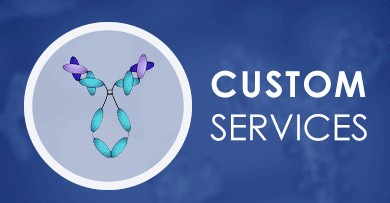+ Filter
 Loading...
Loading...

CXCL14
 Loading...
Loading...Anti-CXCL14 Products
-
- Species Reactivity: Human
- Type: Mouse antibody
- Application: WB
- Sheep Anti-CXCL14 Recombinant Antibody (clone AF730) (HPAB-0158-LSX)
-
- Species Reactivity: Human, Mouse
- Type: Sheep IgG
- Application: WB
- Rat Anti-CXCL14 Recombinant Antibody (clone MAB730) (HPAB-0159-LSX)
-
- Species Reactivity: Human, Mouse
- Type: Rat IgG
- Application: WB
- Sheep Anti-CXCL14 Recombinant Antibody (clone AF730); scFv Fragment (HPAB-0158-LSX-S(P))
-
- Species Reactivity: Human, Mouse
- Type: Sheep scFv
- Application: WB
- Rat Anti-CXCL14 Recombinant Antibody (clone MAB730); scFv Fragment (HPAB-0159-LSX-S(P))
-
- Species Reactivity: Human, Mouse
- Type: Rat scFv
- Application: WB
- Sheep Anti-CXCL14 Recombinant Antibody (clone AF730); Fab Fragment (HPAB-0158-LSX-F(E))
-
- Species Reactivity: Human, Mouse
- Type: Sheep Fab
- Application: WB
- Rat Anti-CXCL14 Recombinant Antibody (clone MAB730); Fab Fragment (HPAB-0159-LSX-F(E))
-
- Species Reactivity: Human, Mouse
- Type: Rat Fab
- Application: WB
- Anti-CXCL14 Immunohistochemistry Kit (VS-0525-XY1817)
-
- Species Reactivity: Human
- Target: CXCL14
- Application: IHC
-
- Species Reactivity: Human, Mouse
- Type: Rat IgG
- Application: Antigen-Sweeping In Vivo.
View More Products
Can't find the products you're looking for? Try to filter in the left sidebar.Filter By Tag
More Infomation
Our customer service representatives are available 24 hours a day, from Monday to Sunday. Contact Us
For Research Use Only. Not For Clinical Use.
Background
This antimicrobial gene belongs to the cytokine gene family which encode secreted proteins involved in immunoregulatory and inflammatory processes. The protein encoded by this gene is structurally related to the CXC (Cys-X-Cys) subfamily of cytokines. Members of this subfamily are characterized by two cysteines separated by a single amino acid. This cytokine displays chemotactic activity for monocytes but not for lymphocytes, dendritic cells, neutrophils or macrophages. It has been implicated that this cytokine is involved in the homeostasis of monocyte-derived macrophages rather than in inflammation.
Predicted location
Secreted
Single cell type specificity
Cell type enhanced (Proximal tubular cells, Basal keratinocytes, Basal squamous epithelial cells, Fibroblasts, Suprabasal keratinocytes, Breast myoepithelial cells, Glandular and luminal cells)
Immune cell specificity
Not detected in immune cells
Cell line specificity
Group enriched (HAP1, hTCEpi, RPTEC TERT1, SuSa, U-2 OS)
Molecular function
Cytokine
More Types Infomation

